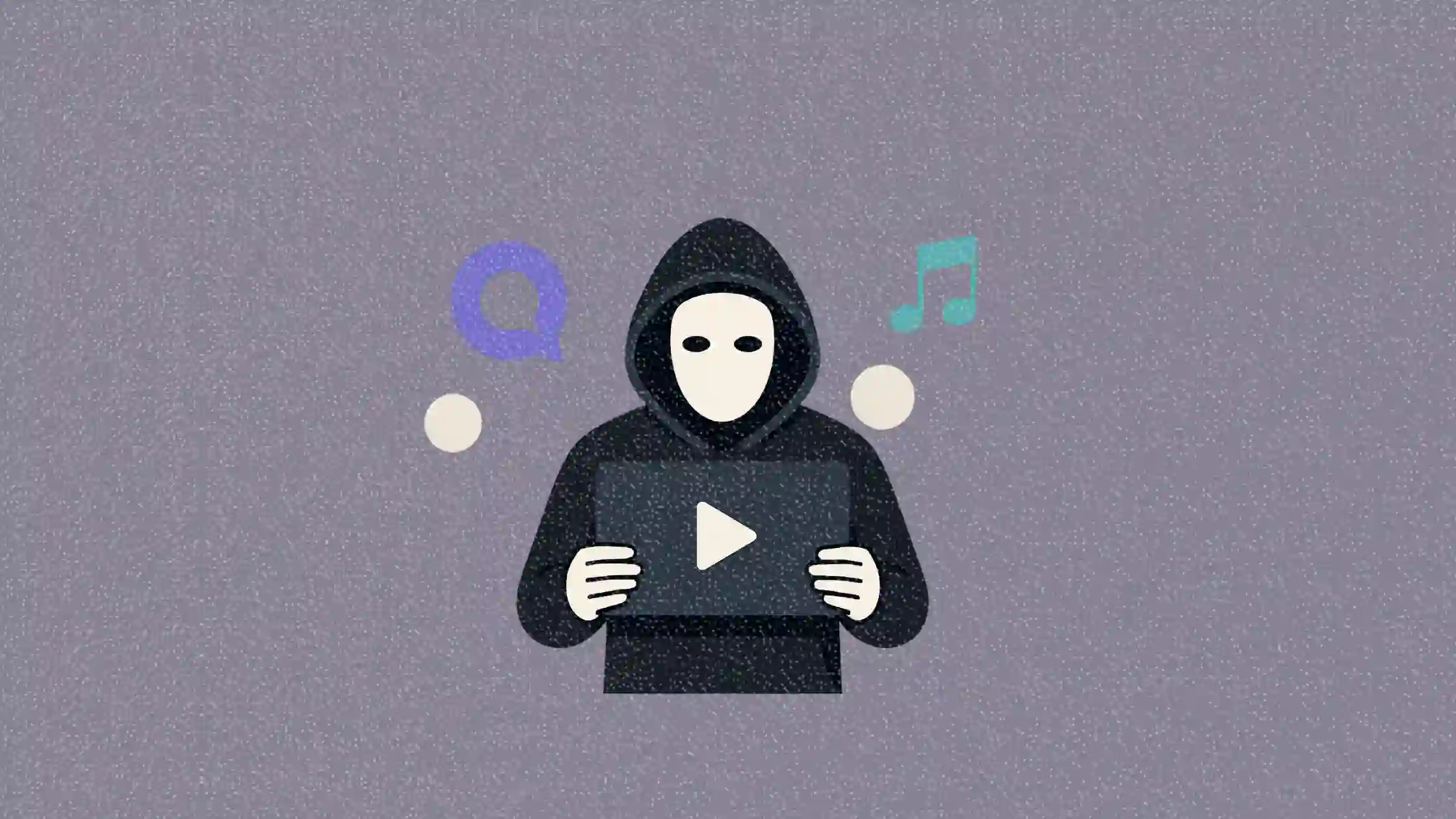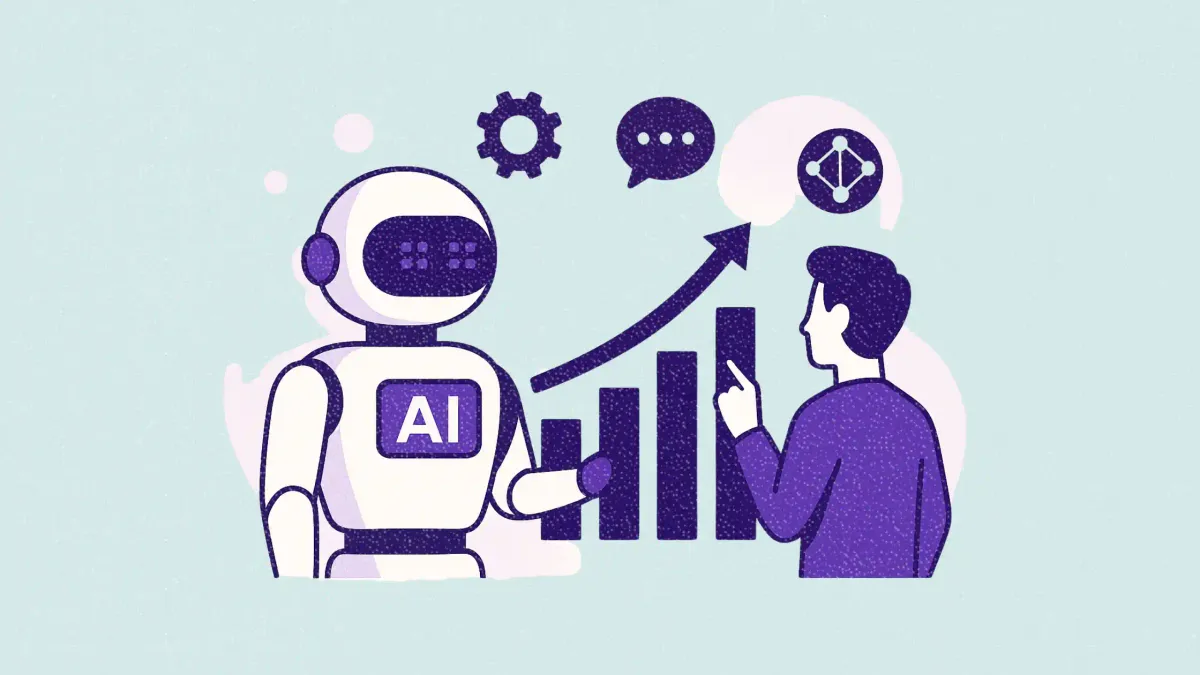The rise of faceless creators
Faceless creators are rising across platforms. Here’s what this trend means for content strategy, monetization, and brand marketing.

Faceless creators are taking over YouTube, TikTok, podcasts, and even X (formerly Twitter)—without ever revealing their identity. In a creator economy obsessed with personality, their rise signals a major shift.
And it’s not just a niche trend. According to reports, In 2025, faceless YouTube and TikTok accounts make up approximately 38% of all new creator monetization ventures. The audience appetite is clear too: 72% of Gen Z viewers say they care more about content quality than whether the creator is visible. Even more striking—86% of viewers consider faceless content more authentic because it shifts the focus to the message, not the messenger.
This article explores how anonymous content is scaling fast, why audiences increasingly prefer it, and what marketers should understand as the line between persona and value-driven storytelling fades.
Short on time?
Here’s a table of contents for quick access:
- Why creators are going faceless
- The tools powering this movement
- How faceless creators are building profitable businesses
- What this means for marketers and content teams

Why creators are going faceless
Choosing anonymity isn’t just a stylistic decision—it’s a strategic one. As creator burnout becomes more common and online privacy risks grow, many are opting out of the spotlight altogether.
Faceless content lets creators produce at scale, outsource production, and avoid the constant pressure to perform for the algorithm.
For many, the shift comes down to four main drivers:
- Privacy and safety: With doxxing and harassment still rampant, anonymity offers creators peace of mind and control over their personal lives.
- Burnout prevention: Being the face of a channel means relentless content demands. Faceless formats let creators focus on strategy and output—not appearances.
- Fear of going viral personally: Not everyone wants their face associated with a viral moment. Faceless content delivers reach without the personal exposure.
- Niche suitability: Explainer videos, animations, and stock-footage-driven content thrive without a visible host. Examples are The Infographics Show (14.3M subscribers) or HowToBasic (17M subscribers).

The tools powering this movement
This new wave of creators is powered by AI and automation, not ring lights and personal vlogs.
- AI voice generators
Platforms like ElevenLabs and PlayHT are booming. The voice generator market is projected to reach US$54.54 billion by 2033, growing at 30.7% CAGR.
- Text-to-video tools
Pictory and Synthesia allow users to turn scripts into videos—no filming needed.
- AI scriptwriting
Tools like ChatGPT and Krater help generate engaging content outlines and scripts.
- Visual asset tools
CapCut, Canva, and KLAP make it easy to produce polished visuals without original footage. QuickSubs handles fast captioning.
- Faceless podcasting
Audiograms and AI-edited narration are redefining the podcasting game, giving creators full control with zero identity reveal.
How faceless creators are building profitable businesses
Faceless doesn't mean financially invisible. In fact, many of these creators are quietly generating serious income—often rivaling or outperforming their on-camera peers.
On YouTube, automation channels earn steady revenue by pumping out evergreen content optimized for search and ad monetization. These videos often cover tutorials, explainers, or trending topics, using AI voiceovers and stock visuals to maintain consistency without the need for personal branding.

Over on TikTok, faceless pages are thriving in affiliate marketing. By promoting niche products through clever storytelling or educational formats, these creators can convert views into clicks without ever showing their face—sometimes outperforming traditional influencers who rely on personal charisma.
@mrstorytelling
The monetization doesn’t stop there. Many faceless creators diversify with digital products, course sales, and even merchandise. From print-on-demand T-shirts to paid newsletters and eBooks, their business model centers on value-first content. They’ve built trust not on personality, but on the utility and consistency of their output.
Case in point
Real-world results show just how lucrative faceless content strategies can be. One TikTok creator reportedly earned US$7,000 in just 60 days by leveraging AI-generated videos, trending audio clips, and affiliate marketing links—all without ever appearing on camera.
But perhaps the most impressive example is Cal.ai—a teen-founded health app that used faceless TikTok content to fuel hypergrowth. In just 34 days, the brand reached US$1.5 million in monthly recurring revenue.
The secret? A lean, faceless TikTok strategy driven by short-form explainer clips that highlighted the product’s value in relatable, scroll-stopping ways. No influencers, no flashy brand deals—just smart messaging and consistent output designed to scale.
These examples highlight a powerful truth: faceless content isn’t just viable—it’s highly effective when paired with the right platform strategy and monetization model.
What this means for marketers and content teams
Faceless content is no longer fringe—it’s a scalable strategy that’s reshaping marketing.
- More competition
As more creators go faceless, brands face a noisier, more automated landscape.
- Trust without a face
Authenticity now depends on content quality, not charisma. Brands must learn to build credibility through value—not just personality.
- Branding shift
The creator-as-brand model is giving way to content-as-brand. Marketers need to pivot toward storytelling that focuses on the message, not the messenger.
- A scalable content strategy
Faceless formats offer brands the ability to produce high-volume content across languages and platforms—especially useful for campaigns with global or niche reach.
Conclusion: faceless doesn’t mean soulless
The rise of faceless creators marks a shift from personal fame to scalable impact. For marketers, the takeaway isn't to hide—but to embrace the benefits: privacy, automation, and message-first storytelling.
This trend isn’t about removing the human touch—it’s about reshaping how we connect with audiences at scale.




